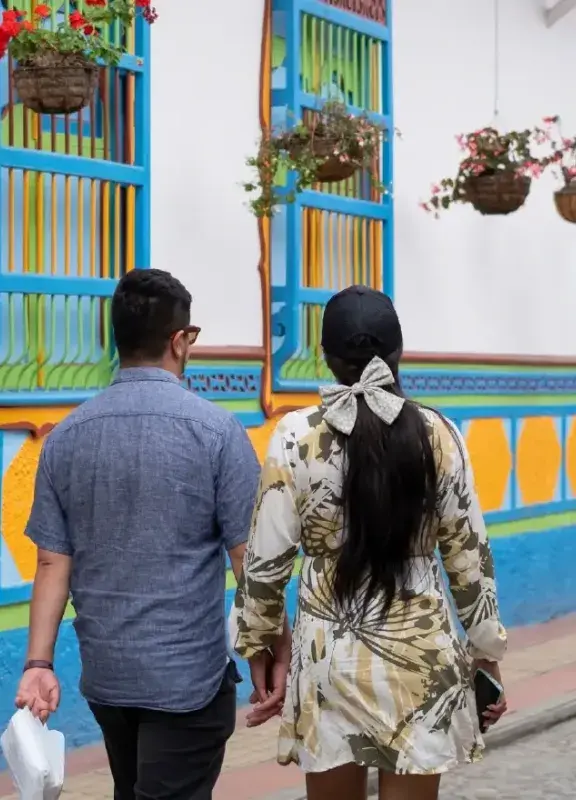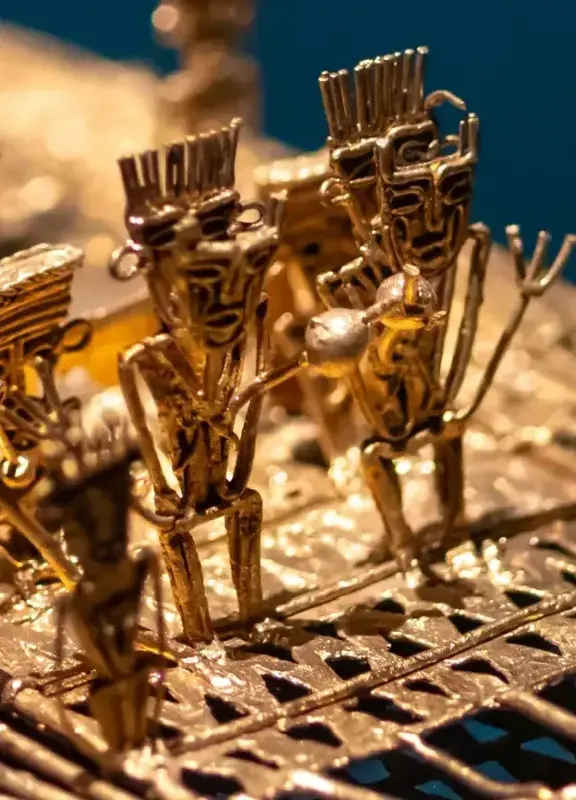The Battle of Boyacá, the decisive feat for Colombian independence
Under the command of Simón Bolívar, the Liberation Campaign achieved a resounding victory at the Battle of the Boyacá Bridge, an event that determined Colombian independence.
The Puente de Boyacá, located 14 kilometers from Tunja and 110 kilometers from Bogotá, was the site of one of the biggest battles fought on Colombian territory for our independence: The Battle of Boyacá.
When was the Battle of Boyacá?
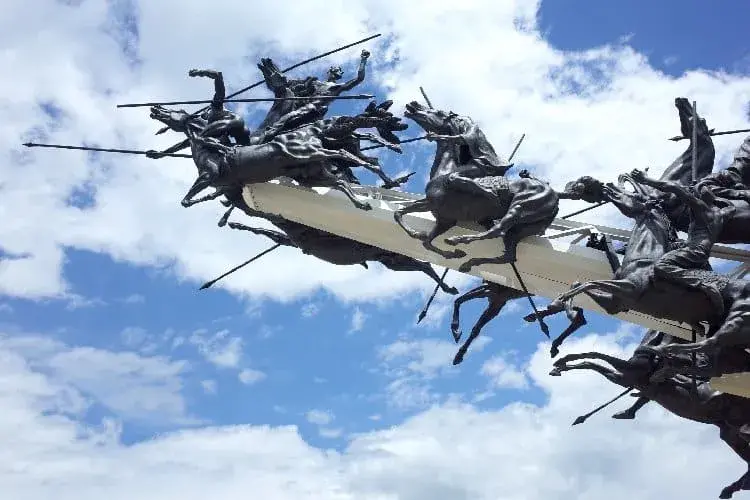
It occurred on August 7, 1819, this battle not only marked the end of the violent disputes for power on Colombian territory but also secured the independence victory that the country had aimed for on July 20, 1810. This confrontation holds great historical significance for Colombia's independence, as it ensured the success of the liberation from the Spanish Empire with the final fall of the Viceroyalty of New Granada.
How did the Battle of Boyacá develop?
It all began with a series of struggles fought by the Liberating Campaign that —led by Simón Bolívar— resisted the Spanish reconquest in 1819. After overcoming various obstacles, the patriot army emerged victorious in the battles of Gámeza (July 11) and the Pantano de Vargas (July 25), which were key to the outcome of the Battle of Puente de Boyacá.
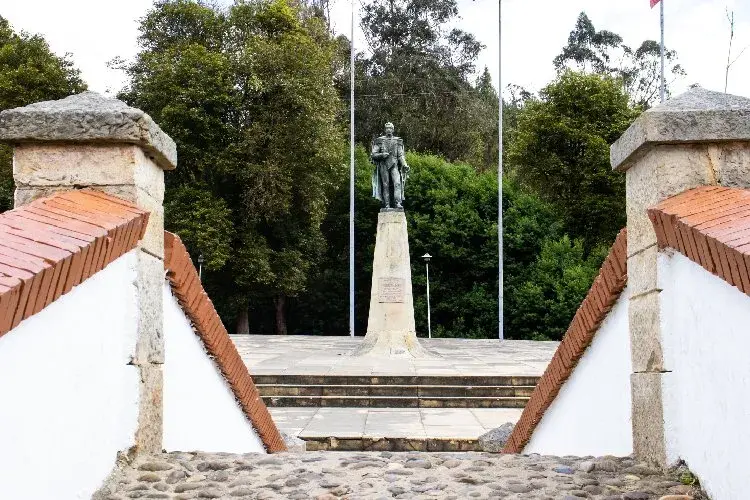
After 77 days of the formation of the Liberating Campaign, that August 7 was decisive. Bolívar's strategy was clear: to surprise the royalist army, which had no choice but to cross the Teatinos River to reach Santafé, where it would be safe from the patriot attacks. Under the command of Simón Bolívar, Francisco de Paula Santander, and José Antonio Anzoátegui, the patriot troop composed of 2,850 combatants (Creoles, mulattos, mestizos, zambos, indigenous, and blacks) ambushed the royalist army which had 2,670 men led by Colonel José María Barreiro.
In a battle that lasted about six hours, the liberating troops emerged victorious and forced the Spanish forces to surrender, who were taken as prisoners. After being captured, Barreiro attempted to bribe the fifteen-year-old soldier Pedro Pascacio Martínez, who refused and handed him over to Bolívar. As soon as the defeat of the royalists was known, Viceroy Juan Sámano fled from Santafé, a city that was then under the control of the Creoles.
What did the Battle of Boyacá mean for the history of Colombia?

This battle not only marked a definitive step in our independence, but it also influenced victories in Carabobo in Venezuela, Pichincha in Ecuador, and Junín and Ayacucho in Peru. The bridge, which suffered severe damage, was rebuilt on August 7, 1919, by President Marco Fidel Suárez. Now the bridge is one of the most iconic sites in Colombian history, surrounded by monuments that honor the independence struggle such as the statues of Simón Bolívar, Francisco de Paula Santander, and Pedro Pascasio Martínez. Nearby, symbols like the Plaza de Banderas, the Arch of Triumph, the Stone Lectern, the Flame of Liberty, the British Legion Stone, and the Obelisk are also present. Relive the liberating route!
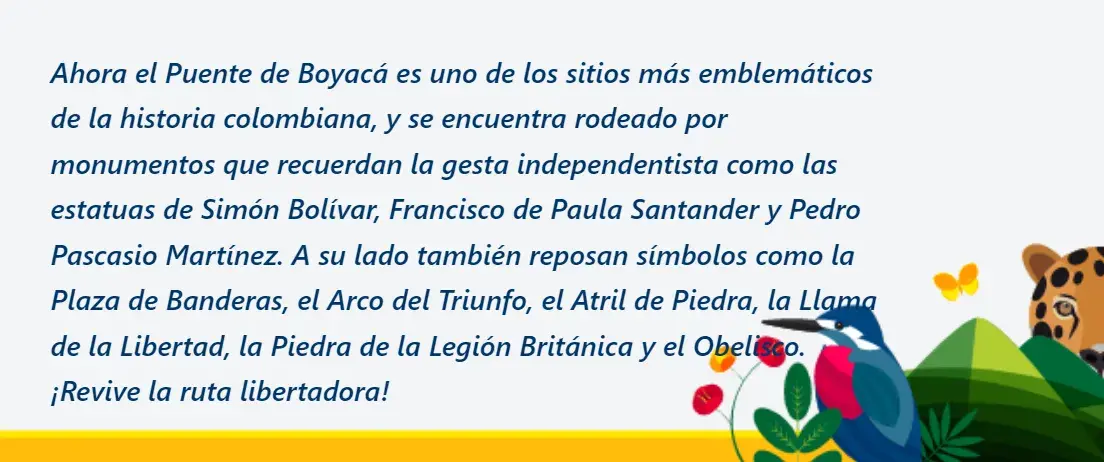
You may also be interested in:
 Welcome, you are in
Welcome, you are in 










